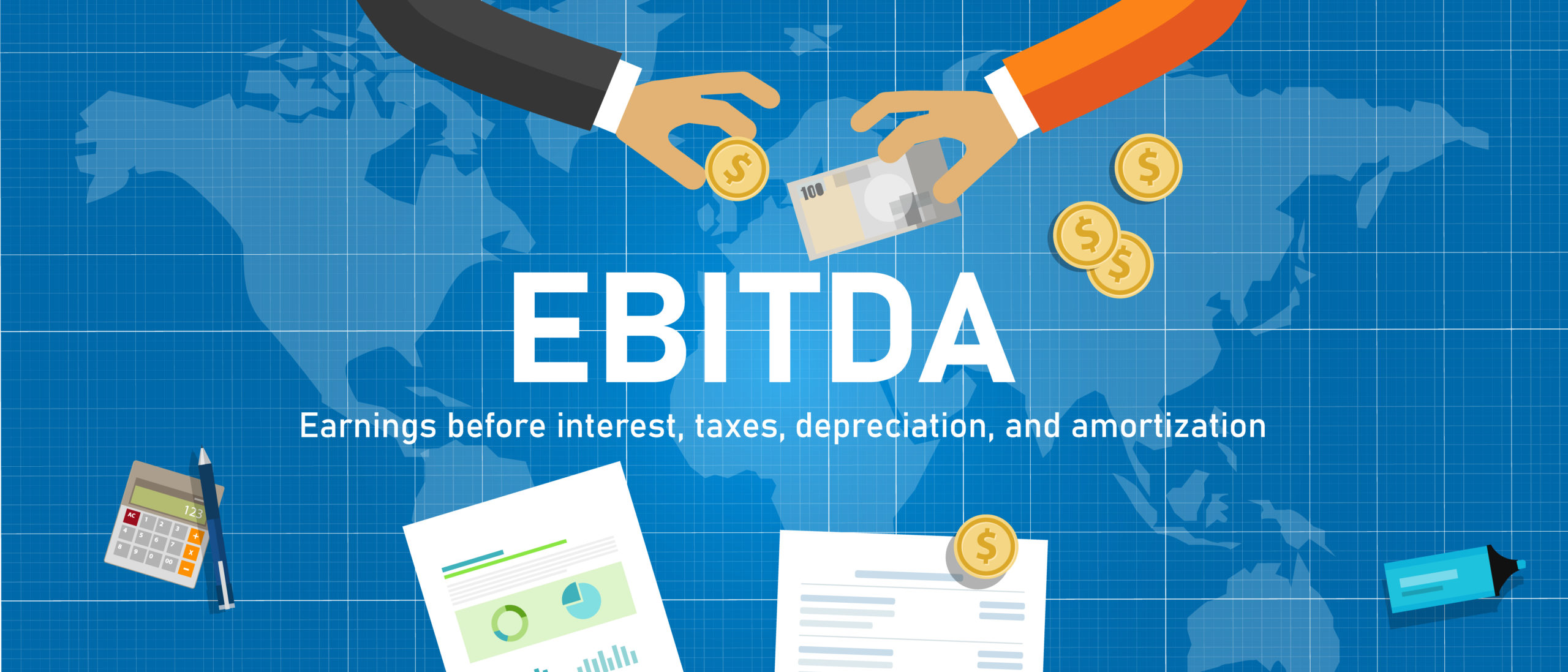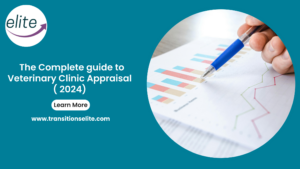What EBITDA Multiples Do Veterinary Practices Sell For (In 2025)

What Multiples of EBITDA Do Vet Practices Sell For?
In 2024, veterinary practices typically sell for multiples of EBITDA (Earnings Before Interest, Taxes, Depreciation, and Amortization) ranging from 8x to 13x. Factors influencing EBITDA multiples include the veterinary practice’s size, location, profitability, growth potential, and quality of the client base. High-performing practices in desirable locations can achieve higher multiples, while smaller or less profitable practices may see lower multiples.
Why is EBITDA Important for Veterinary Practice Owners?
You’ve probably heard the term “EBITDA” before, but you might not know precisely what it means or why it’s essential for your vet clinic. This article will explain everything about EBITDA, including how to calculate it and when you should use it.
Without a crystal ball, it can be challenging to spot the subtle signs of financial trouble when you own your veterinary clinic. But don’t worry, there’s an easy way to learn about the financial health of your vet clinic: EBITDA!
Don’t miss out on this opportunity to have your practice valued by the experts. This can be a helpful exercise to understand where your veterinary practice stands and how to grow it to ensure it can yield great returns in the near future.
Before we move ahead, take a moment to check out these video testimonials from our clients, Dr. Sharon Gorman and Dr. David Graeff, who have experienced the incredible benefits of partnering with Transitions Elite when it comes to practice valuation, selling, and understanding key financial metrics.
“I had previously looked at selling the practice on my own, and I had talked to five different companies about this and had gone through the process individually, and none of it turned out to my satisfaction. After I signed up with Tom, he marketed me to these interested companies. There was competition amongst those interested. It was so relieving at the end of it to know that I got the very best deal possible!”
David Graeff – Cedar Rapids, Iowa
I knew that I would get the best value for my practice if I had a professional helping me. And it definitely turned out to be true that having Tom in my corner.
I have zero doubt that I would not have gotten the value for my practice if I didn’t have him on my side as well as the ease of it. It was such an easy transition and he made the entire process very simple.
Sharon Gorman – Las Vegas, Nevada
Transitions Elite holds your hand and guides you through the whole process. Even though it’s a stressful time and situation, they make selling so easy.
Dr. Lonnie & Naomi Davis – Ohio
Don’t miss out on your chance to discover the true worth of your practice. Click here to request a free valuation.
Now, let’s dive deeper into what EBITDA is, the various factors that constitute EBITDA, and how it can impact your veterinary clinic’s success.
What is EBITDA, and why is it important for valuing veterinary practices?

This is a question we get asked often, and it’s understandable. EBITDA is an acronym for Earnings Before Interest, Taxes, Depreciation, and Amortization, but what does that mean?
EBITDA is a measure of profitability that doesn’t apply “real” costs to the picture by measuring how much a business makes before accounting for interest payments, tax deductions, depreciation costs, and other financial subtractions.
MANDATORY DISCLAIMER!
We know from practice that taxes and accounting can get a little confusing and our goal is to simplify the sometimes complicated world of taxes. However, we are not accounting or tax professionals. So, If you’re still a little fuzzy on the details, we recommend hiring an accountant at a reputable firm.
EBITDA is calculated by subtracting the firm’s interest expenses from its operating income(before depreciation) to get a figure that represents how much money the company makes in operations each year before paying any debt service expenses or taxes (including self-employment taxes).
Let’s look into various factors that constitute EBITDA:
Remember EBITDA is Earning Before Interest, Taxes, Depreciation, and Amortization.
Now let’s look at each of these elements.
Interest: This is essentially the cost of borrowing money from a bank or other lender to buy your vet practice or fund your business operations. So, because EBITDA calculates your profits before taking into account interest charges, the value does not change whether or not you borrowed money to finance your vet practice.
Taxes: The significant taxes considered in the EBITDA calculation are federal and state income taxes. The general rule is that EBITDA does not include real estate or sales taxes. However, this rule is suspended when your vet clinic lease mandates that you pay real estate taxes. The same thing happens when the clinic pays sales taxes on products. Lastly, now that you’re looking to sell your vet clinic, buyers may ignore your tax situation, and instead, they will consider what they fancy.
Depreciation: The third item is depreciation which represents the loss in value of capital assets over time (for example, buildings or equipment).
Amortization: It represents an allocation of costs over time for intangible assets such as trademarks or patents.
EBITDA Is Not Profitability
EBITDA can be misleading because it does not consider all the expenses that go into running a business. Using EBITDA as an indicator of profitability could lead to some serious financial mistakes. That’s why we recommend you always check with a professional for your vet practice valuation before making decisions based on EBITDA alone!
Here’s how EBITDA differs from profitability:
| Factors Considered | EBITDA | Profitability |
| Net Income | ✓ | ✓ |
| Interest | ✓ | ✓ |
| Taxes | ✓ | ✓ |
| Depreciation costs | ✓ | ✓ |
| Amortization costs | ✓ | ✓ |
| Owner compensation | _ | ✓ |
| Rent | _ | ✓ |
| All other discretionary expense | _ | ✓ |
Why are EBITDA Multiples Important for Veterinary Practices?
In the vet practice industry, especially when it comes to buying and selling vet clinics, EBITDA is sometimes used in place of cash flow when the accounts receivable are few.
Therefore, it is not uncommon to see potential buyers use the EBITDA multiples of your veterinary clinic to arrive at a proposed purchase price. For example, as of 2021-22, multiples of EBITDA widely used ranged from 10-18x. But ultimately, it depends on many factors, including location, the specialty of the practice, size, growth potential, quality of clientele, and the likes.
What does this mean for you, a veterinary clinic owner?
One way to command a high purchase price for your practice is to strive to improve the value of your EBITDA. From our experience, buyers were willing to pay more for clinics with substantial revenue over the years.
But there’s a problem:
EBITDA is a flawed metric for gauging the profitability of your clinic. Hence it will fail to account for the actual value of your vet clinic. So, even though EBITDA is popular among those buying veterinary practices, chances are high that you won’t get a fair price for your business when multiples of EBITDA are used to calculate the worth of your veterinary clinic during a sales negotiation.
Don’t despair, there’s a better option (AND IT’S FREE!):
We want to ensure that you get the most for your vet practice, and the best way to do that is by giving you a free veterinary practice evaluation. Our team of expert financial analysts has helped hundreds of veterinary practices like yours to evaluate their businesses and maximize their value, from knowing when to sell your vet practice to direct introductions to high-intent buyers.
We will conduct a thorough analysis of your business, including:
- Detailed financial statements
- Market analysis
- Industry trends
- Competitive analysis
- And many other factors
At the end of the day, your veterinary practice is more than just numbers on a spreadsheet, it’s years of dedication, relationships, and care. Our goal is to help you translate that into real value when the time comes to sell, so you can feel confident knowing you’re getting the reward your hard work deserves. And the best? We won’t charge you anything at all!
And the best? We won’t charge you anything at all!

Melani Seymour, co-founder of Transitions Elite, helps veterinary practice owners take action now to maximize value and secure their future.
With over 15 years of experience guiding thousands of owners, she knows exactly what it takes to achieve the best outcome.
Ready to see what your practice is worth?











